The big tuskers of Tsavo are making a comeback

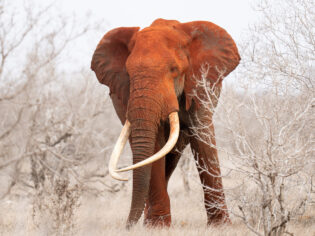
Brought to the brink of extinction, Tsavo East National Park’s fabled big tuskers are making a comeback.
The hunt is over. We have found the big tusker after a days-long search. He sways ankle-deep in love grass, his jowls heavy with ivory. I snare him in my sights, aim the barrel lens and press the shutter. Then I lay my camera aside and lose myself in the majesty of the moment.
The last of Tsavo’s big tuskers
Before me stands one of Tsavo Conservation Area’s eight remaining big tuskers – bull elephants whose tusks weigh more than 50 kilograms each and are so immense they often drag along the ground. Brought to the brink of extinction by trophy hunters and ivory poachers, their genes have been identified in 27 younger members of the area’s 14,000-strong elephant population. Against such odds, the existence of these so-called “emerging tuskers” is miraculous.

Spot elephants from the tented safari camp.
“These genes are being preserved and maintained,” says Nganba Malingi, a guide at Satao Camp in Tsavo East National Park, Kenya. “Patrols are done by air, by road, by foot, monitoring them, collaring them, GPS. And it has been working. Tsavo is a hotbed, an epicentre of the big tuskers, especially Satao Camp.”
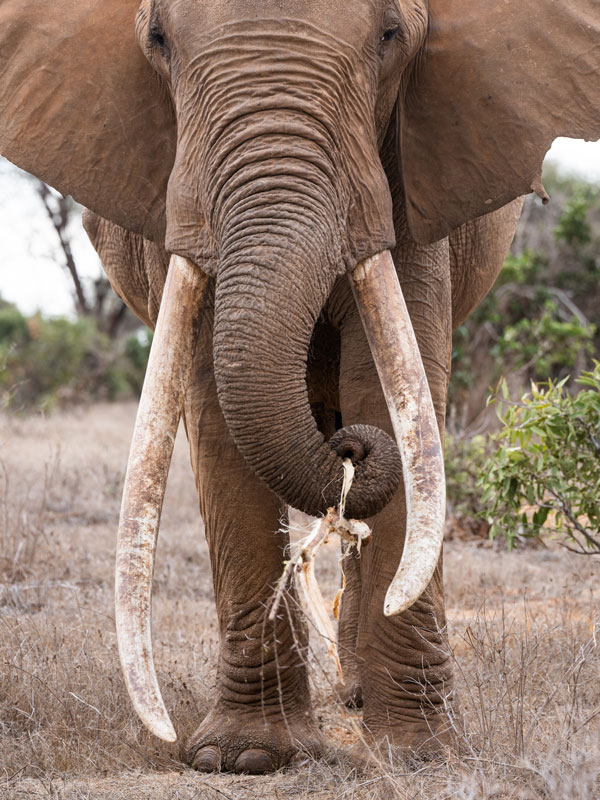
One of the big tuskers of Tsavo East National Park, Kenya. (Image: William Burrard-Lucas)
Where can you find them?
This region is indeed a stronghold for tuskers of all stripes: one-third of Kenya’s elephants live between the contiguous Tsavo East and Tsavo West national parks (which form part of the Tsavo Conservation Area).

Prepare your binoculars on The Big Tusker Safari with Bench Africa.
The earth reverberates with their footfall; herds appear to move as one, gliding across the horizon like paper cut-outs joined trunk-to-tail. Their hides reflect the colours of this painted landscape: black for the cotton soil, grey for the ashen loam and red for the laterite sod streaking the plains.

Tsavo’s red laterite soil lends its elephants their distinctive hue. (Image: William Burrard-Lucas)
This camouflage reveals itself close up at dawn as the herd files towards the waterhole at Satao Camp. My tent flaps are open and I can see the elephants from my bed through the tightly zipped mosquito screen. There’s no sign of the lion that woke me in the early hours as he passed by; his mane-haloed face had entered my dreams and lulled me back to sleep.
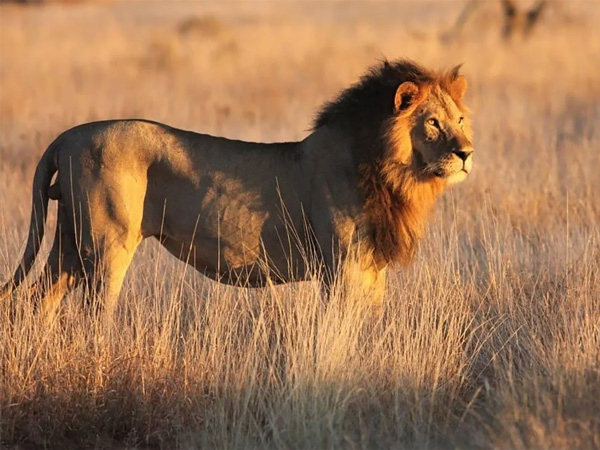
Lions are often sighted at Satao Camp.
Living in the wilderness
My askari (guard) has placed refreshments on the deck and I sip coffee in the company of elephants taking their own morning drink.
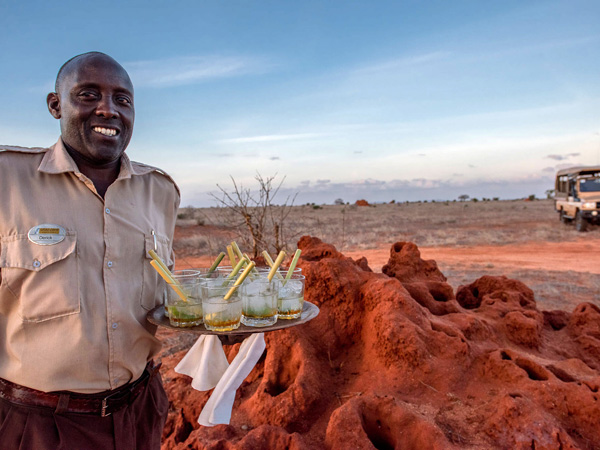
Sundown at Satao Camp. (Image: William Burrard-Lucas)
Though no big tuskers are among them, their gravitas is undisputed; their faces are stained brick-red, their feet shod in patent black cotton soil boots. In the rainy season, up to 1000 elephants will gather here each day, big tuskers among them.
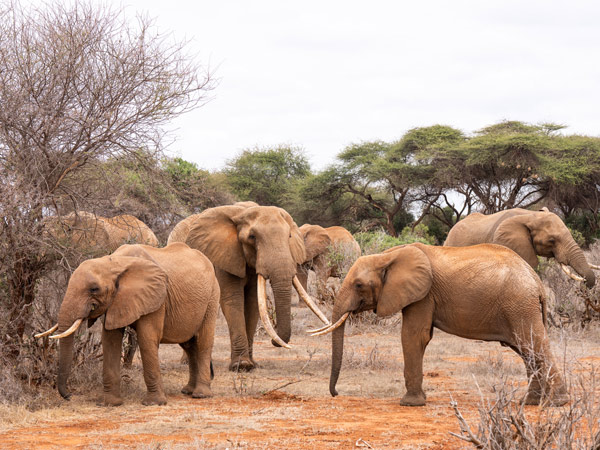
The best time to spot animals around Satao Camp is on a game drive at dawn or dusk. (Image: William Burrard-Lucas)
But the rains haven’t broken yet; though I could spend all day watching the passing traffic from the camp’s open-air dining room or watchtower, Nganba tempts me away on a treasure hunt. “It’s a fresh beginning,” he says.
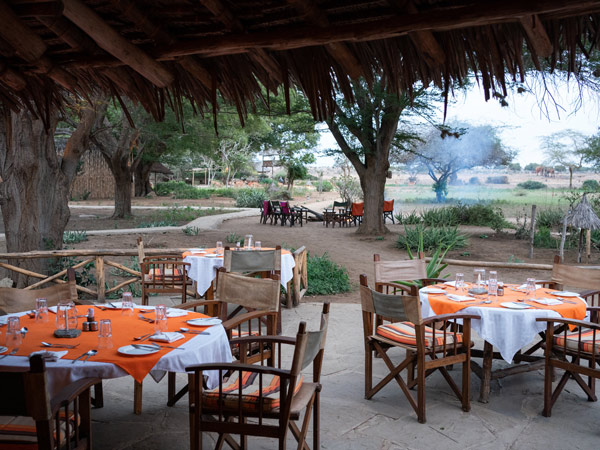
Look out over the waterhole from the outdoor dining area at Satao Camp. (Image: William Burrard-Lucas)
The rising sun snags on the thorn trees and sets the savannah alight. Oryx emerge from a cloud of dust, their horns crisscrossing like wayward exclamation marks. Masai giraffe – the tallest of the species – crane their necks towards an aircraft gliding overhead. It’s a Kenyan Wildlife Service aerial patrol, part of that collective effort by conservation organisations to revive big tuskers and protect their kin.
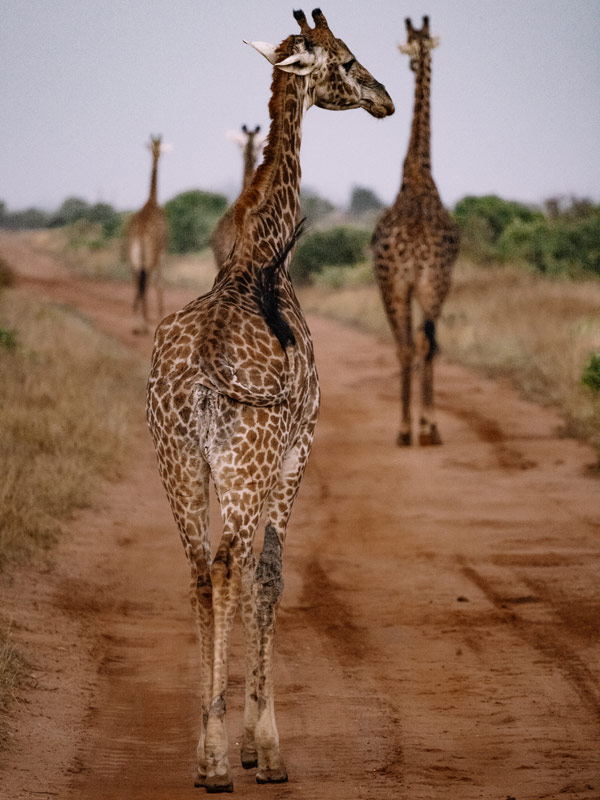
The magnificent mammals are known to hang out around Satao Camp. (Image: William Burrard-Lucas)
Saving the last big tuskers
As Nganba points out, their work is reaping dividends: poaching has dropped by about 90 per cent; projects initiated by Tsavo Trust, an elephant conservation NGO, have improved economic opportunities for local communities and reduced human-wildlife conflict; and a rescue-and-rehabilitation program run by Sheldrick Wildlife Trust – one of Africa’s oldest conservation organisations – has saved scores of elephants impacted by drought, conflict and poaching. “Tsavo has a future,” Nganba says.

Trophy hunting and poaching must end.
He’s idling through riparian habitat, the Taita Hills rising blue beyond the thicket. This is leopard territory, but there’s another loiterer about: an emerging tusker, one of the elite up-and-comers in whom resides the hope of so many. The elephant turns towards us, his tusks mighty cutlasses carving the air. “See how they curve inwards?” Nganba says. “Up, down, this way, that way. They are like fingerprints.”
From nowhere, a flock of openbill storks floods the sky. They are a portent, it seems, winged sages foretelling a miraculous rebirth.
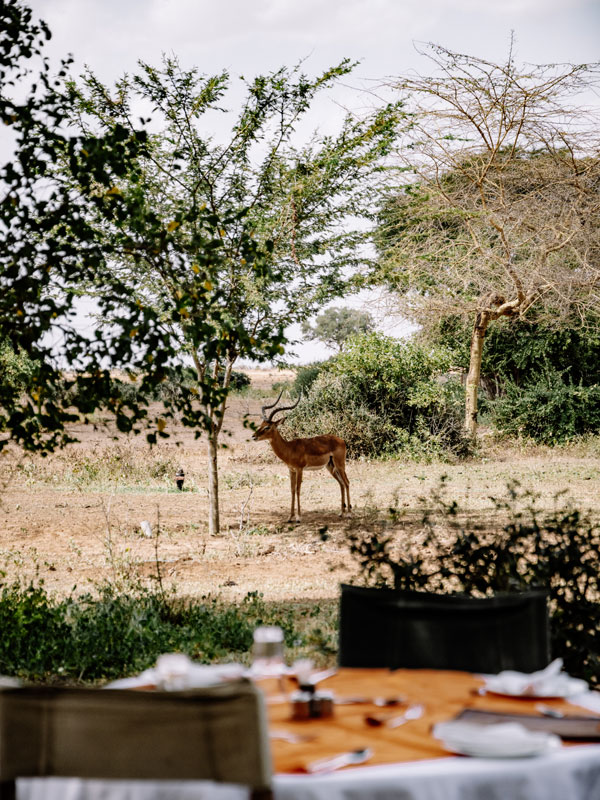
Impalas watch on as you enjoy lunch under tamarind trees.
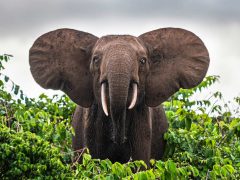
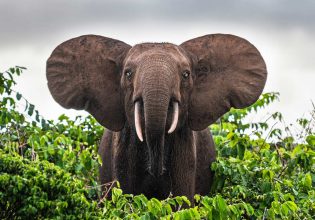
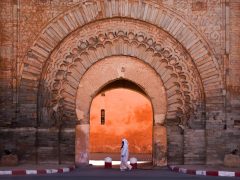
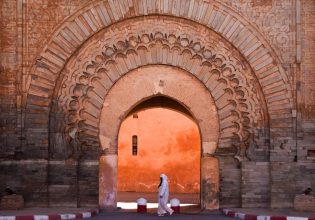


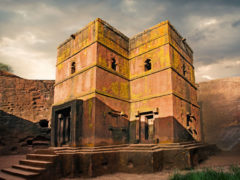

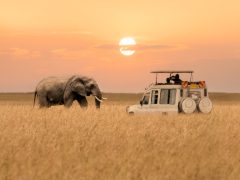
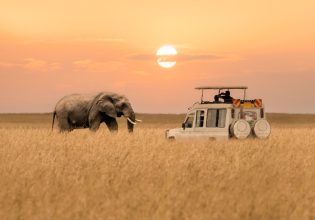
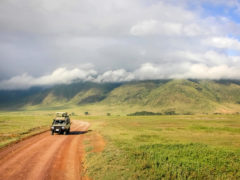
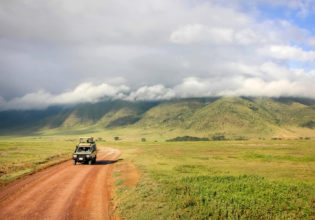


We are keen to finally catch sight of the regal, ancient Super Tuskers.